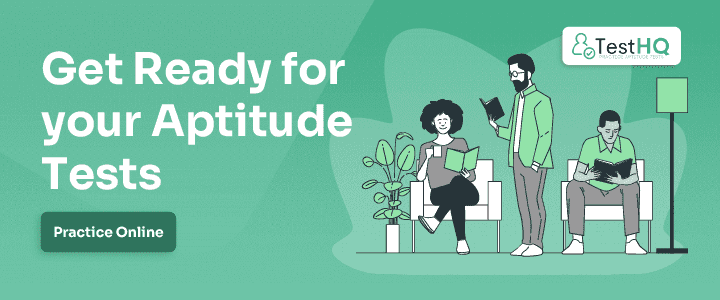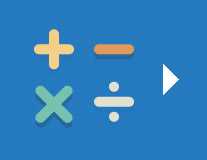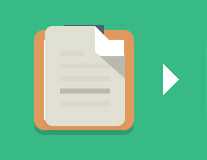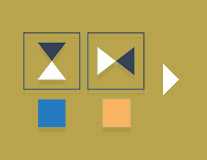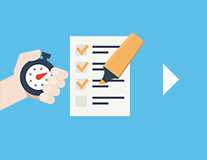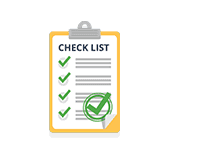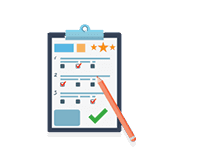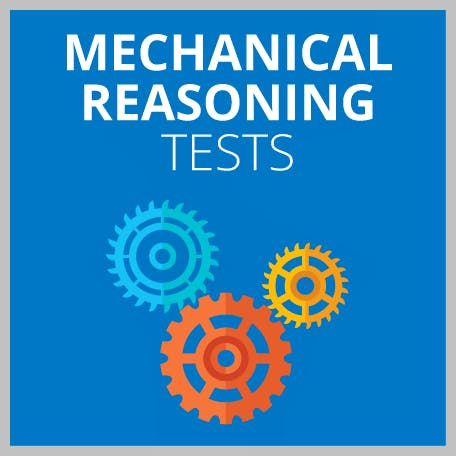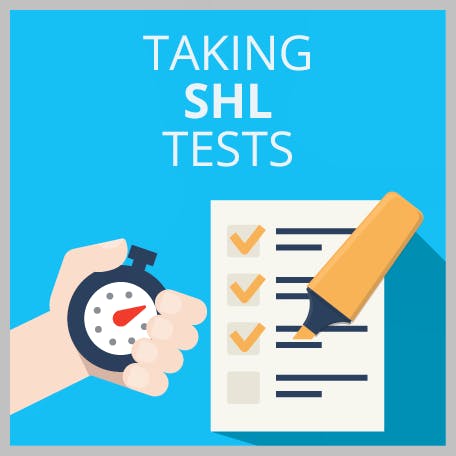A Guide to the BKSB Assessment Test: Examples & Tips
Updated May 31, 2024
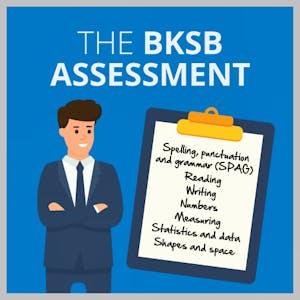

If you have applied for a job, apprenticeship or college course in the UK or Australia, you may have been asked to complete a Basic and Key Skills Builder or BKSB assessment).
The initial BKSB assessment determines suitable applicants for an apprenticeship or places a student in the correct class level on a college course. The assessment tests you on your maths and English skills to identify areas that need improvement.
This guide will explain the BKSB assessment in detail, provide example questions, and answer your queries about the test content and format.
What Is the BKSB Assessment?
The BKSB assessment is widely used across the UK and Australia to assess a candidate's maths, English, and information and communication technology (ICT) skill level.
The new format and content of the assessment came about after the Department for Education and Skills identified several functional skills necessary for success in the workplace.
BKSB is an online educational technology specialist company that has perfected the assessment over the past 20 years to ensure candidates are ready for the job or course they have chosen.
The BKSB test gives students access to learning resources and assesses the applicant's current level. It identifies areas for improvement so you can reach the desired level for the job, apprenticeship or course you wish to take.
You can then use this information to work on the areas in which you need to improve.
Once the BKSB programme is completed, you will be assessed on these functional skills at GCSE level.
Many colleges and universities across the UK and Australia use the BKSB assessment.
Additionally, many large businesses like KPMG, Mercedes Benz, Harvey Nichols and British Gas also use the BKSB assessment to recruit their junior staff.
Functional skills are seen as essential for apprenticeships, and employers are required to provide students with the necessary resources to gain them.
For other roles in the workplace, the BKSB tests are used by recruiters to identify training and development needs, as well as for workforce planning and management.
What Is the BKSB Test Process?
The BKSB assessment is made up of several different sections:
- Initial assessment
- Diagnostic assessment
- Learning resources
- Progress check
- Exam practice
The two main focuses for the student are the initial assessment and diagnostic assessment.
Initial Assessment
The initial assessment will determine your current level and identifies areas for improvement.
This part of the test assesses maths, English, and information and communication technology.
The initial assessment is untimed, but it usually takes around 20 minutes. The score is not affected by how quickly you finish the test.
It's a dynamic test and uses algorithms to generate questions based on the student's competency. Each student will have a different experience, and if they must retake the test, they will see different questions.
You will mark your own test at this stage, and full BKSB test answers are provided so you can learn from their mistakes.
Your BKSB test answers from the initial assessment are used to place you at the correct level for the diagnostic assessment.
BKSB Diagnostic Assessment
Once you have worked on the areas that need improvement, the next stage of the BKSB assessment is the diagnostic assessment.
The diagnostic assessment is also untimed.
This section of the test assesses how far you have come since your initial test. The difficulty of the questions will be amended depending on the results of the initial assessment.
This stage goes into more detail and tests key areas such as:
- Spelling, punctuation and grammar (SPAG)
- Reading
- Writing
- Numbers
- Measuring
- Statistics and data
- Shapes and space
If the test finds areas that you still need to improve on, your employer or educator can use their resources to help you improve on those areas. This will usually be done through an individual learning plan.
You will sit the functional skills test once you have satisfactorily completed the BKSB assessment.
If you'd like to be fully prepared for your BKSB test, we recommend using a tailored assessment practice test package for the BKSB assessment, like this one from TestHQ.
Free BKSB Assessment Practice Test Examples
The BKSB tests assesses two main areas:
- English
- Maths
BKSB English Initial Assessment
You can take the BKSB English test either in an online or paper format.
The English section of the initial assessment tests competency in:
- Sentence structure
- Grammar
- Spelling
- Comprehension
- Capitalisation
- Punctuation
- Sentence sequencing
- Alphabetical ordering
- Vocabulary
The majority of questions are multiple-choice, but some will differ, depending on the area being tested.
For comprehension questions, you will be shown a passage with a list of questions to answer based solely on what you have read.
Some of the common tasks for these types of questions include:
- Creating summaries
- Recalling key information
- Drawing conclusions
- Identifying main ideas
- Determining the author's purpose
To test spelling ability, you may be shown a piece of text and asked to circle the words that are spelt incorrectly. You'll also need to provide the correct spelling for the words you identified.
Questions to assess your vocabulary and grammar may ask you to complete a given sentence by selecting the grammatically correct option.
When testing a free-written question on the test, the marker will be looking for the following criteria:
- Adherence to the word count, if specified
- Suitability of the answer to the required format. For example, a letter must be addressed to someone and signed off by the writer, or a set of instructions must be listed appropriately
- Accurate punctuation
- Appropriate use of paragraphs
- Accurate spelling and a good range of vocabulary
For free-written questions, candidates will be expected to use their own thinking and reasoning to answer the question.
Here is a sample question you could expect in the English test part of the assessment:
The key goal here is to pay attention to the ________ of this ______.
a) seriousness, enquiry
b) Serious, enquiries
c) Seriousness, enquiry
BKSB Maths Initial Assessment
The maths assessment in the initial part of the test can also be administered either digitally or on paper.
The test will assess fundamental maths skills such as:
- Addition
- Subtraction
- Multiplication
- Division
There may also be additional mathematical principles such as:
- Fractions
- Decimals
- Ratios
- Percentages
- Placing numbers from smallest to largest
You may also be asked to pair numbers written as words with the correct number in numerals.
You may use a calculator for some questions on the test, but some will be marked as 'non-calculator'.
You will usually be expected to show your work when answering questions in the maths part of the exam, and you will have to indicate the correct answer clearly.
If you struggle with maths, then it recommended to take an BKSB maths practice test online so you can build your confidence in this area.
Here is an example question you might be asked in the maths section of the test:
Adam owns a selection of golf balls. 3/8 of the balls are green, and the rest are white.
What is the ratio of green to white balls?
a) 3:5
b) 3:8
c) 5:8
d) 8:5
How Is the BKSB Test Scored?
Marking of the BKSB assessment will be available immediately, with in-house marking or by an external marker.
The BKSB assessment levels are split down into:
- BKSB Entry Levels 1, 2 and 3 (below GCSE level)
- BKSB Levels 1 and 2 (GCSE grades D and C)
The level you will be expected to reach will depend on the job you are applying for or the course or apprenticeship you intend to enter.
For example, you may need a Level 1 to enter the college course you wish to take.
There is no pass or fail grade for the BKSB assessment, but you may fail to achieve the desired level you require for your chosen job or course.
Level 2, the highest level of the BKSB assessment, is the equivalent of a pass, or grade C, at GCSE level.
If you don't receive the score you need, there will usually be a chance for you to work on the area you scored lower in and retake the exam. Details of this will be provided through your employer or educator.
If you do receive the score you need, you probably won't need to retake the BKSB assessment and will progress to take the functional skills test.
How to Prepare for the BKSB Assessment
Step 1. Understand the Assessment Format
People often underperform on an assessment because they haven't taken the opportunity to become familiar with the test format.
Not understanding what will come up on the day often results in students feeling overwhelmed and not performing as well as they could have.
Make sure you have spent enough time researching the assessment format. While there is no way to know what questions will come up on the day, the format of the assessment will remain the same. This is where BKSB practice tests will come in handy.
Step 2. Take Paid For or Free BKSB Assessment Practice Tests Online
Practice certainly makes perfect when it comes to any test or assessment. Luckily, there are lots of online resources to practice the BKSB assessment.
Even setting aside 20 minutes each day in the lead-up to the assessment can improve your performance on the day.
To be as prepared as possible when you take the BKSB test, we recommend using a tailored assessment practice test package for the BKSB tests, like this one from TestHQ.
Step 3. Study the Areas You Find More Challenging
We can all fall into the trap of spending time on the areas we're already good at. While it may raise your confidence for that part of the assessment, you won't see any improvement in your overall result.
While doing your online BKSB assessment practice test, take note of the areas in which you're scoring lower and dedicate most of your time to those areas.
Of course, it's still good to practice in all areas of the assessment before the test day.
However, spending more time on the more challenging areas will help you feel at ease.
Step 4. Revise Core Maths and English Skills
The main aim of the BKSB test is to assess the candidate's maths and English skills. Therefore, you will benefit from revising core maths and English topics.
As well as doing online BKSB assessment practice tests, supplement your studying by revising core elements of the GSCE maths and English curriculum.
There are lots of online resources to help with this.
Step 5. Stick to a Study Schedule
The best way to ensure you're taking enough time to study for a test is by creating a study schedule that you can realistically stick to.
Make sure you take regular breaks; 10 minutes for every 50 minutes of studying is usually a good approach.
Moreover, allow enough time to maintain a healthy lifestyle and to get enough rest, eat healthily and have plenty of physical exercise.
The BKSB assessment is used by employers, universities and colleges throughout the UK and Australia.
It’s an online test that assesses a candidate’s math, English and information and communication technology skills to determine if they possess the level required for their desired course or job.
To get prepared for your BKSB test, we recommend using a tailored assessment practice test package for the BKSB tests, like this one from TestHQ.
There is no ‘good score’ on the BKSB assessment. After your test, you will be given the level you are currently at: either pre-entry levels 1–3, level 1 or level 2.
Depending on the course or job you’re applying for, you’ll be expected to reach a certain level.
The pre-entry level indicates the student is at pre-GCSE level, level 1 corresponds to a GCSE grade D and level 2 is equivalent to GCSE grade C.
If you don’t reach the level you need for your job or course, you may be given a chance to practice the areas you didn’t perform well in and retake the test.
The positions that require you to pass the BKSB assessment are generally junior or entry-level jobs for which you need a certain level of core maths and English skills.
There is no limit to how many times you can apply for the BKSB assessment. Each time, you will be given the areas you need to work on to improve.
However, once you reach level 2, you will not be required to take any more BKSB assessments.
The difficulty of the BKSB assessment depends on your current competency level. If you have taken the time to prepare, you shouldn’t find it particularly difficult.
You can find all the information you need on the BKSB assessment on its website, which will explain the assessment in detail.
To prepare for the test, we recommend using a tailored assessment practice test package for the BKSB assessment, like this one from TestHQ.
There is no set number of questions on the BKSB assessment. The number of questions you are set will depend on your competency level.
Once the BKSB assessment programme is completed, the student will be assessed on the functional skills at GCSE level.
After taking the initial assessment, there is no deadline for the diagnostic test. You are advised to practice on the areas you need to improve on and take the test when you feel ready.
There are five levels in the BKSB assessment:
- BKSB Entry Levels 1, 2 and 3 (below GCSE level)
- BKSB Levels 1 and 2 (GCSE grades D and C)
The Bennett Mechanical Comprehension Test is a pre-employment aptitude test designed to measure your understanding of physical principles relevant to specific job roles.
It consists of 55 multiple-choice questions and has a 25-minute time limit.
Final Thoughts
Doing well in the functional skills test could be the gateway to your dream job, college course or apprenticeship. It's normal for you to feel a little nervous while taking the BKSB assessment.
Preparing well for the BKSB test is the best way to ensure you'll do the best you can on the functional skills test.
This will also help you to feel confident on the day. We recommend doing plenty of paid for or free online BKSB practice tests so that you're comfortable with the format of the questions you'll be asked.
Finally, as with any test, remember to get plenty of rest beforehand and remain calm on the day.

